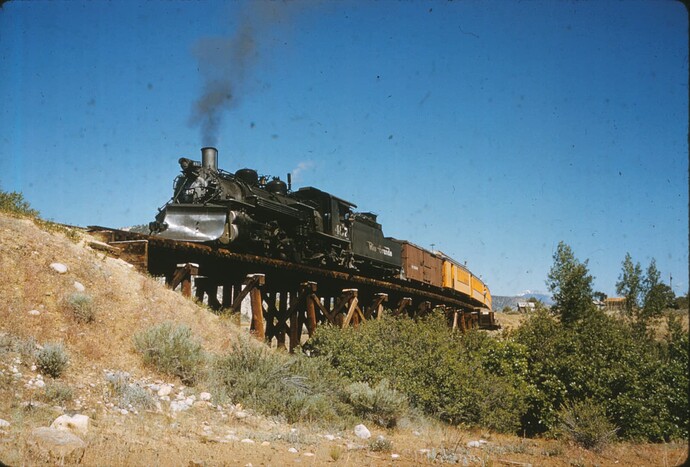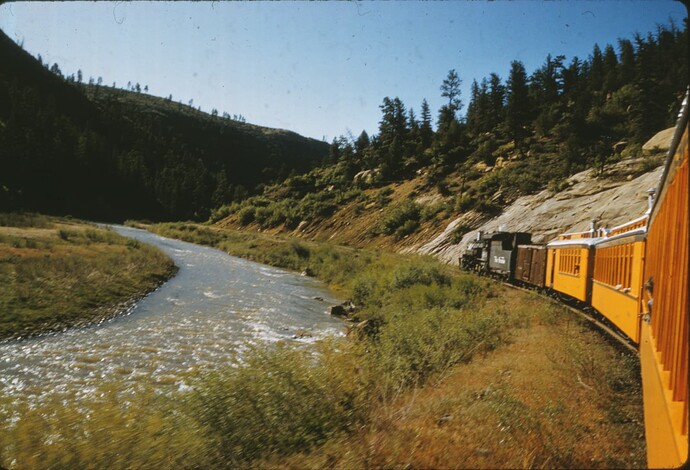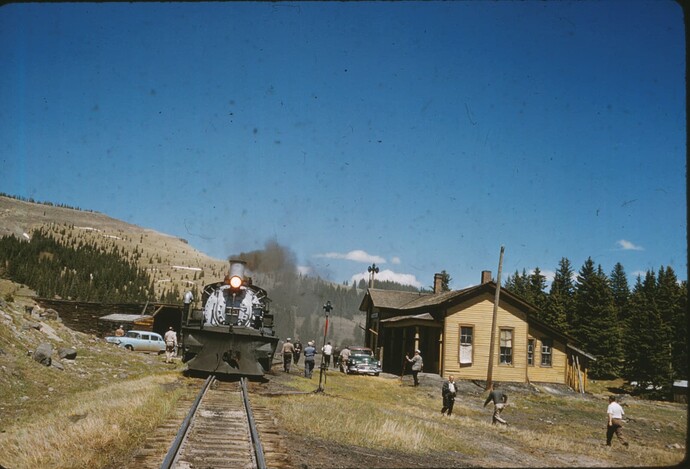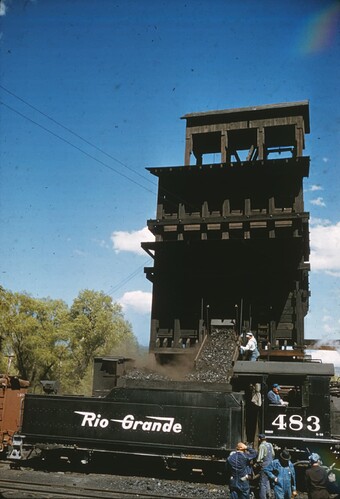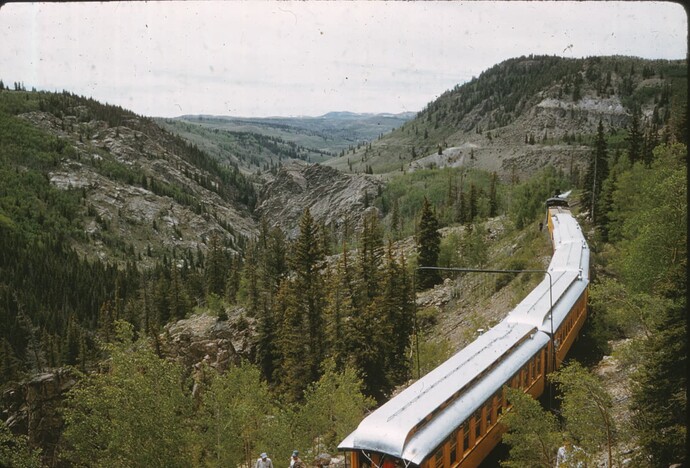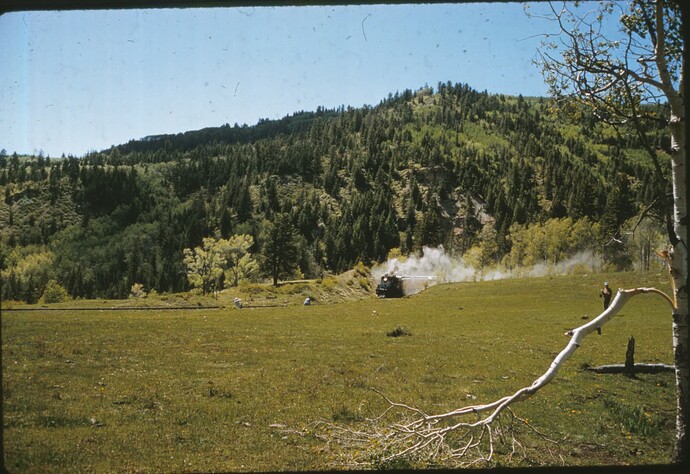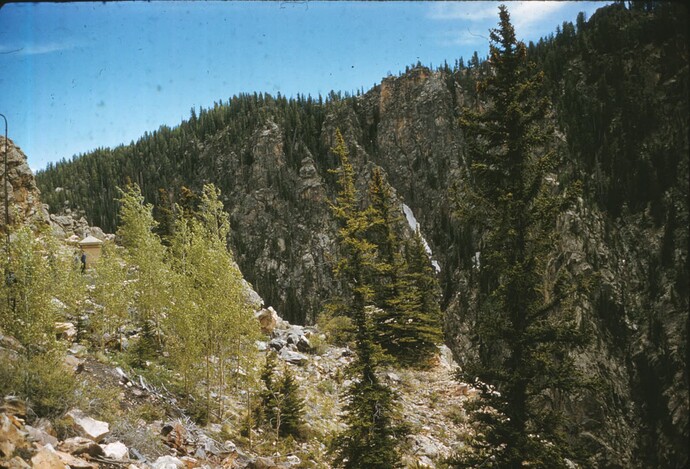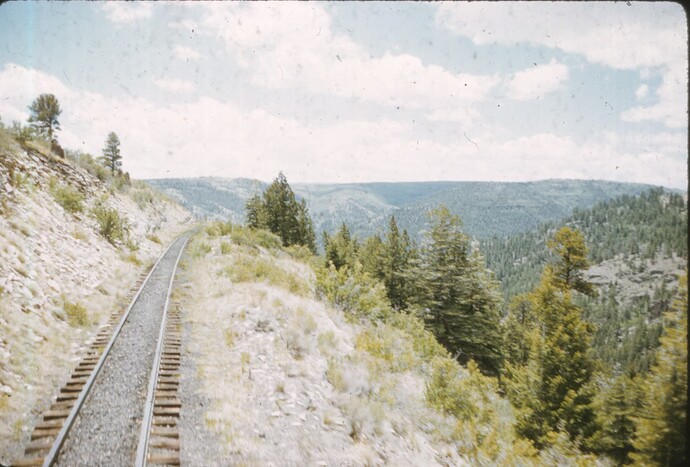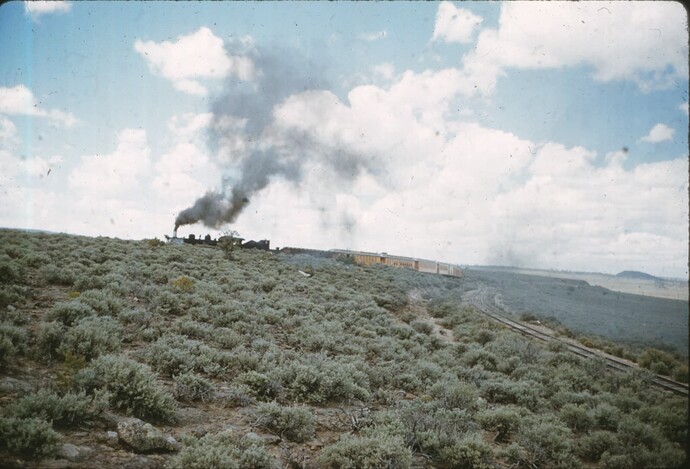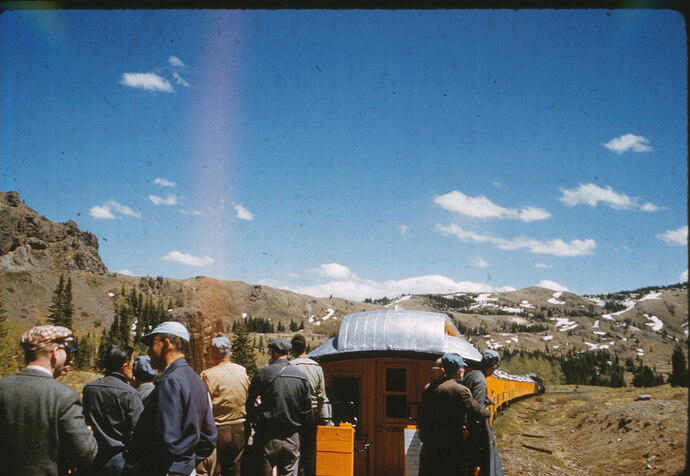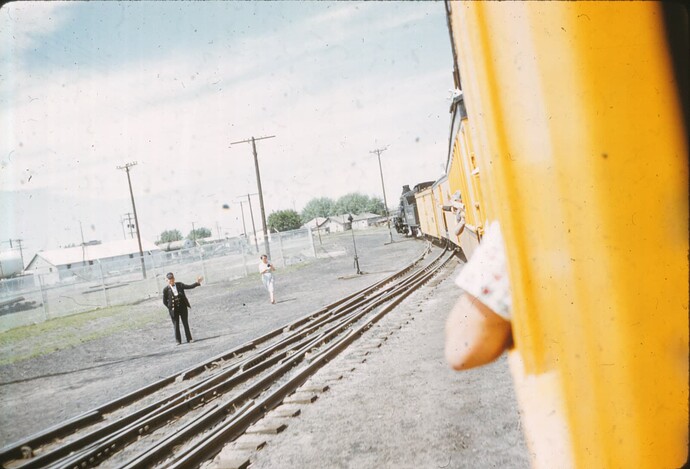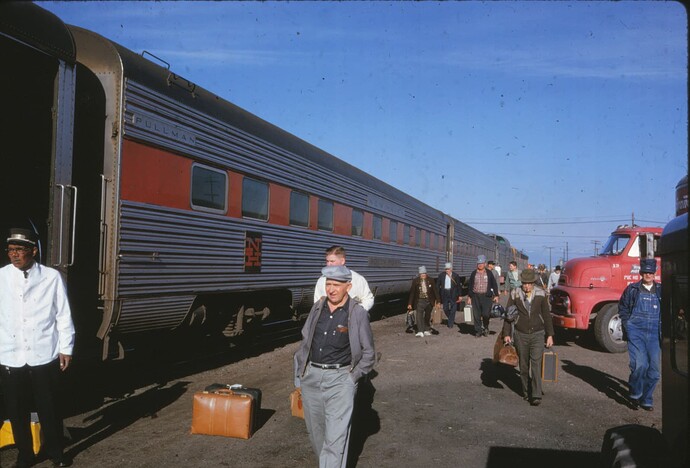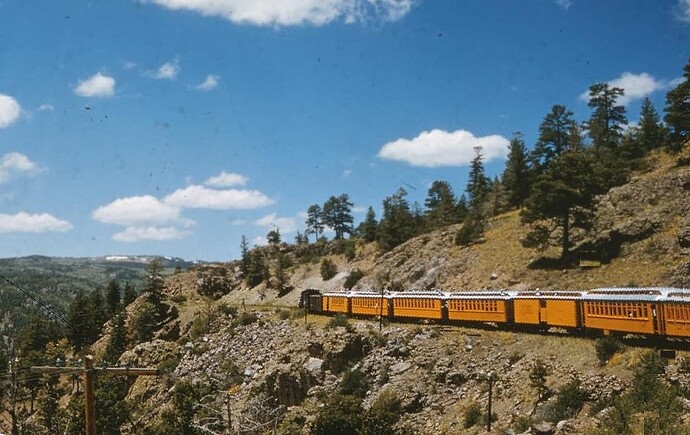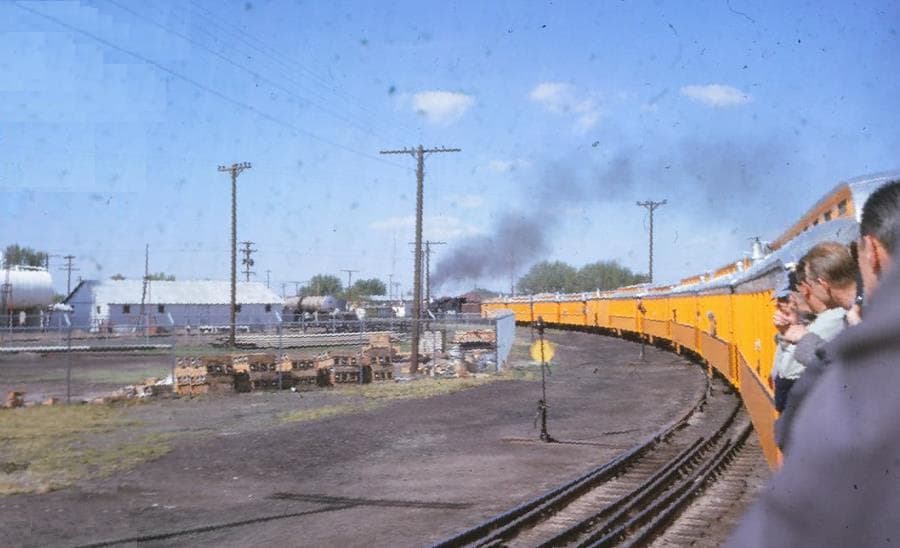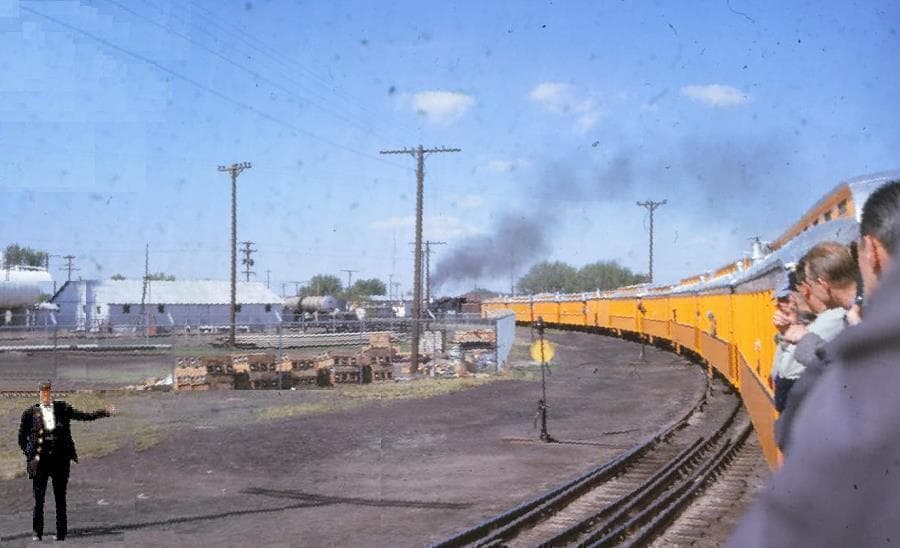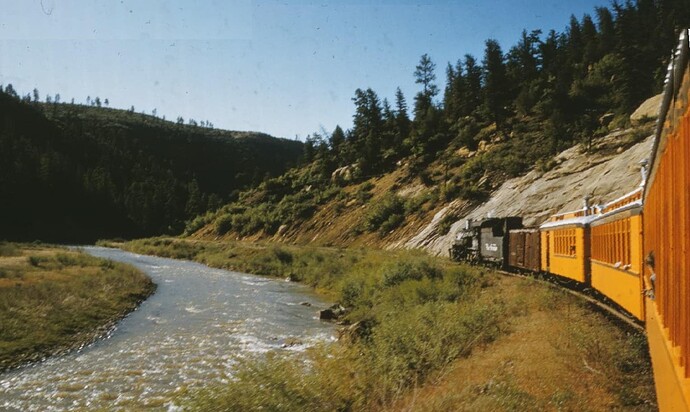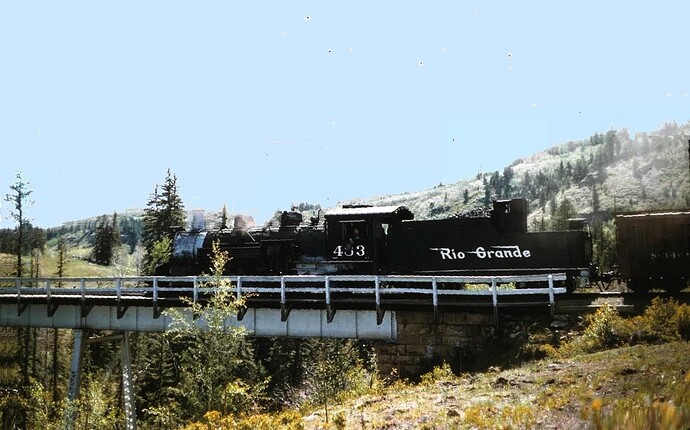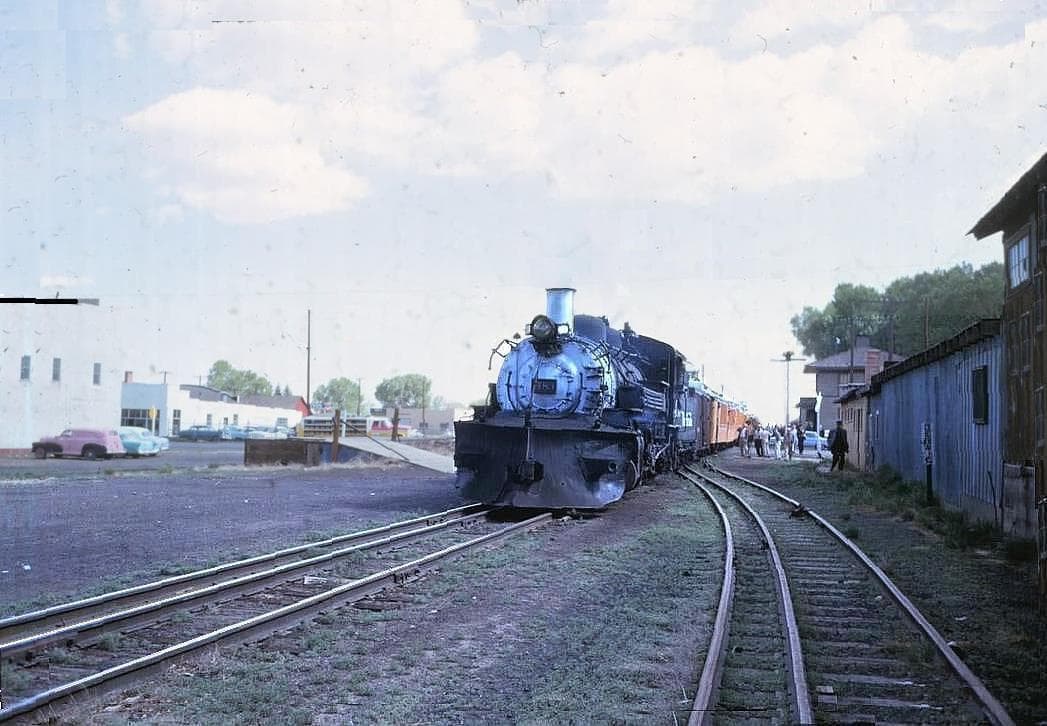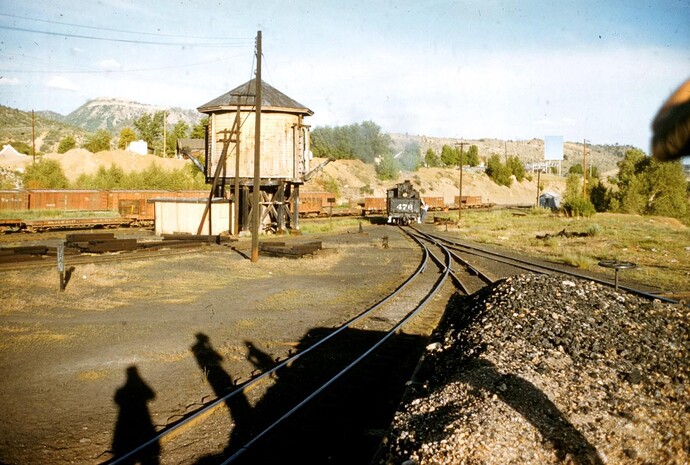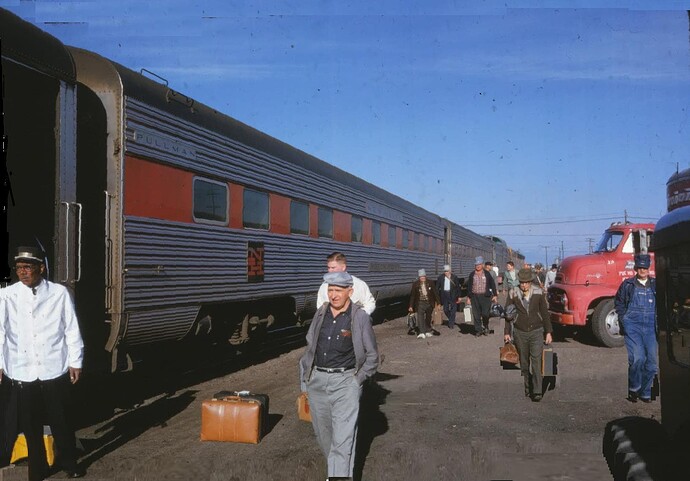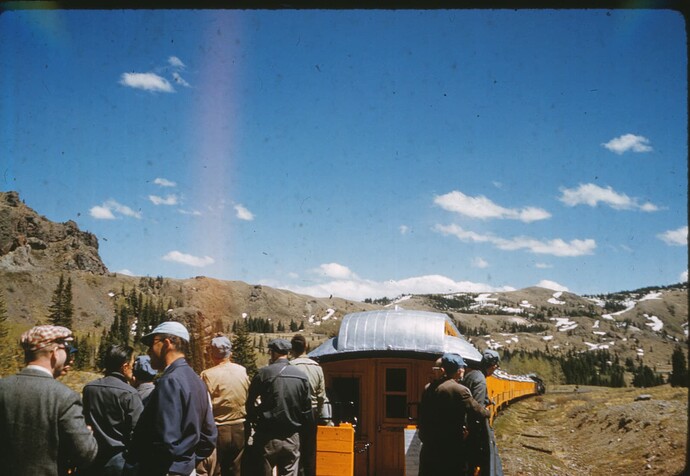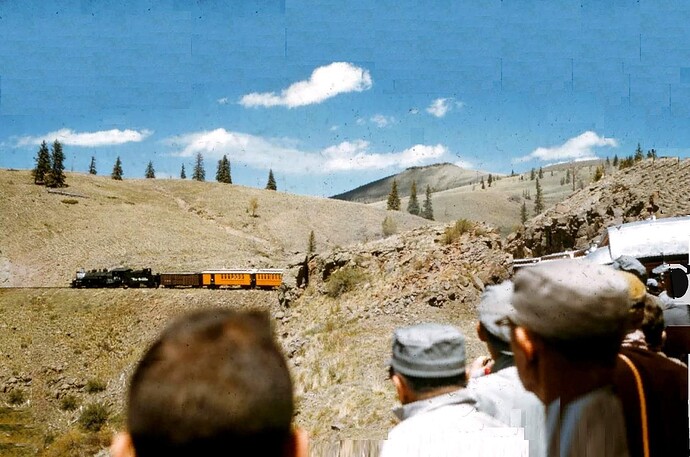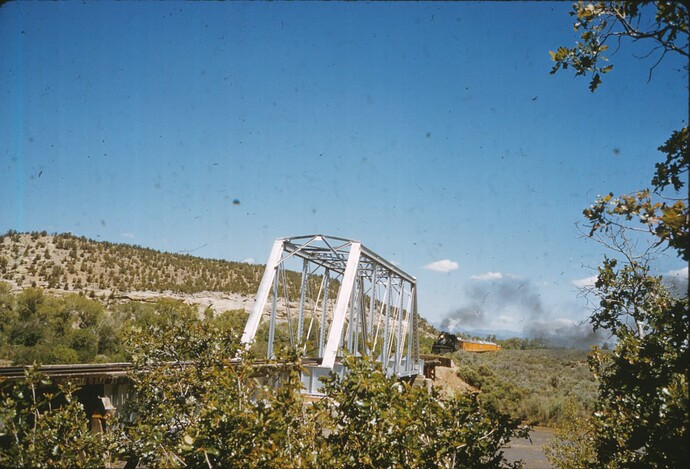Dave, do you remember where the photo of the speeder and gondola was taken?
I believe The gondola and speeder were in Silverton. CONFIRMED, but not the Wye. Off to the left (north) of the Why, as confirmed in a photo thatI hope to post.
Meanwhile:
More photos. Two inb previous postings were edited already. Manybof these new ones require editing. some drastic.
Not this one. ![]()
Rich
I did a second edit on the Alamosa departure image having the right exposure, My first photo was over-exposded, It was the summer 1960 departure, with the pr0perly-exposed photo the 1962 depoarture. But the conductor or official with a hand-wave was missing in the second photo, So here I’ve moved him to the second photo. I won’t delete the original images or either of the edits, and you have your own choices to make. Of couse leaning out the window would not be permitted today.
And here is an edit of the riverside photio. The Los Animas River?
And an edit of the steel bridge photo:
 and the NG C&TS. The wye is SG, and the NG built a loop. There is a short section of 3 rail on the C&TS at the US285 highway crossing that can be seen in Google StreetView. Photo can be rotated.
thans for the reply. and the photo, which I hope to copiy to one hard-drive. The Highwayv Department should be notified that it has on its hands an historically-important relic!
Here is the Silverton Wye:
Just in case some browsers don’t permit rotating Google StreetView photos, here is the a view down the other side of the above RR crossing. I shows the isolated 3 rail continuing a little distance west before the historic sign warning of the end of standard gauge track. It appears that C&TS is maintaining this artifact.
Here is an edit of the overexposed 1960 Alamosa Departure photo, with compensation for the over-exposore, tilt removed, and correction a scratch or two.
Edit of the arrival at Alamosa of the srandard-gauge Kleibolt, Chicago Railroad Club, Special from Chicago. I guess thec CB&Q wished that I would feel at home, assigning me a roomette in the same exact type df car, probably on occasion the car itself, I was using in my weekly commute from Cambridge, Massachusetts, to have a day at the BBN New York Office.
I thought all NH post War car purchases were of the so call ‘American Flyer’ design.
Learn something every day.
‘American Flyer’ cars were Osgood-Bradley paired-window coaches, and were all pre-war.
Postwar cars might have ‘paired-windows’ but of very different construction (with the P-S fake-Budd structure of mild steel with stainless cladding). The 4400-series MUs also had paired windows. These were not at all like the curved-corner chrome-trimmed pair windows on the Osgood-Bradley cars.
The prewar “American Flyers” were 8200 and up. (Decalsv thev American Flyer HO-gauge model were for 8302. The post-war version was the 8600 series for the reclining-sear coaches;and (unlike prewar) there were combines,all with parlor seating, not coach,seating, full parlors, diners and grill cars.. All Boston - Grand Central daytime trains had this type of equipment, as did the Boston - Washington Colonial. The Senator had PRR Budd equipment, similar to the Congrssionals. The Federal had bloth PRR and NYNH&H cars. The poatwar sleepers were not like American Flyers. Prewar American Flyers were on most Springfield - GCT trakins, and some were modernized with reclinijg seats for use on night trains,
Is that in Durango?
Based on my experience riding the C&TSRR, one improvement would be thinning out the trees that are growing on the downslope side of the ROW.
It’s a lot of work to do that, and it kind of changes how the landscape looks.
